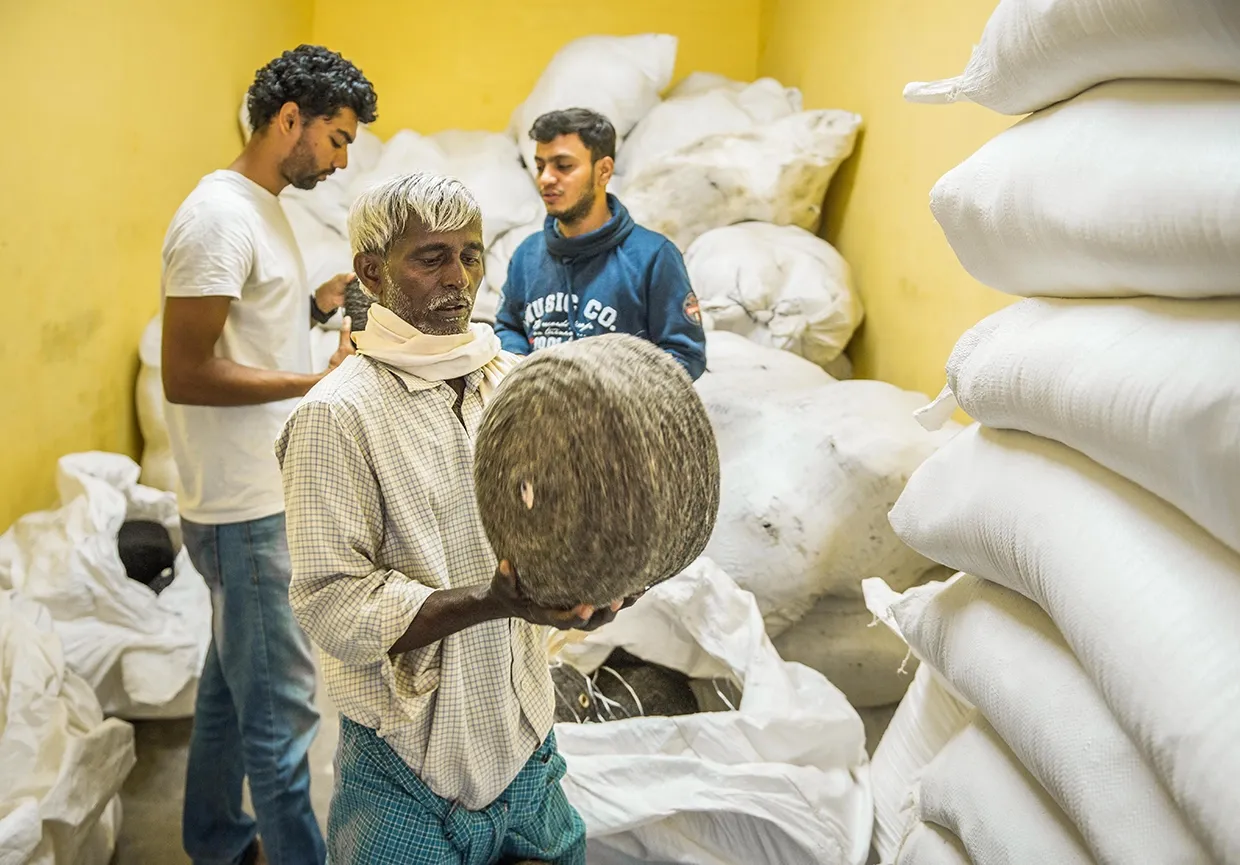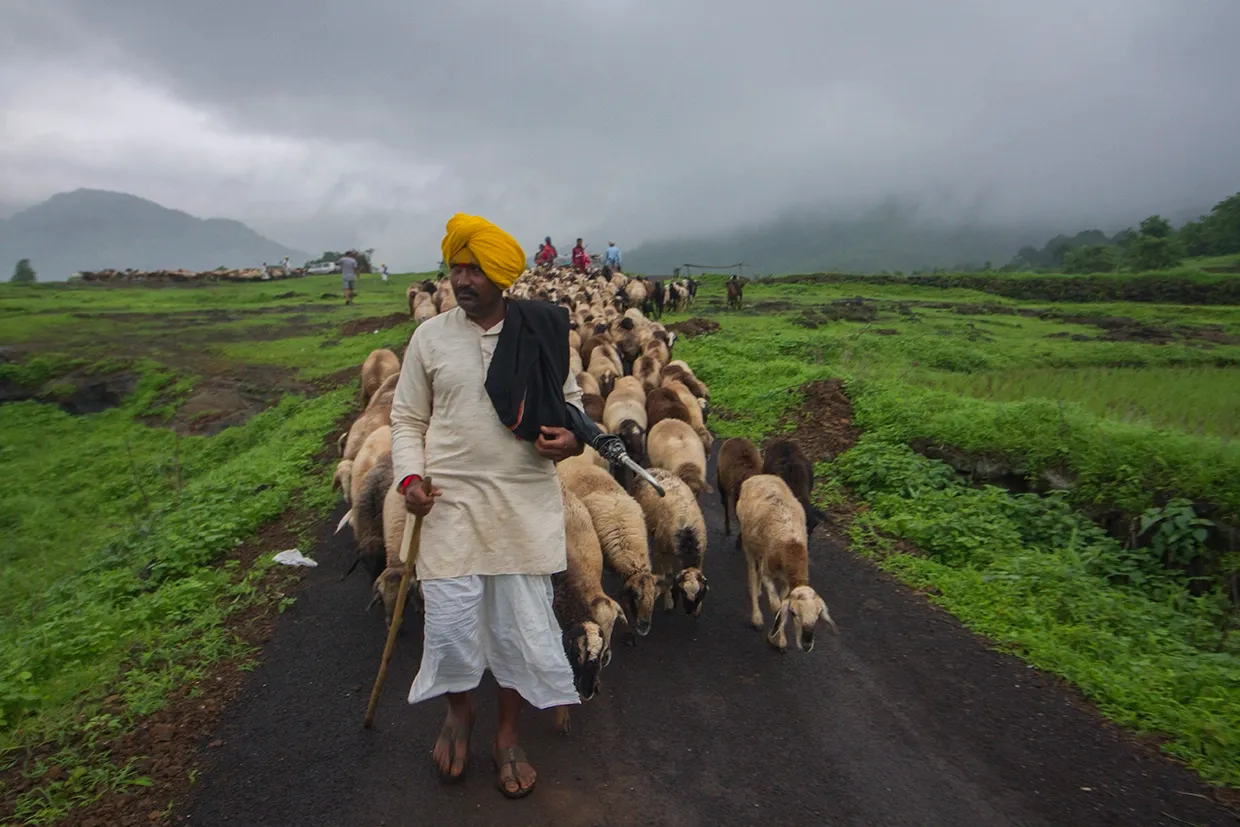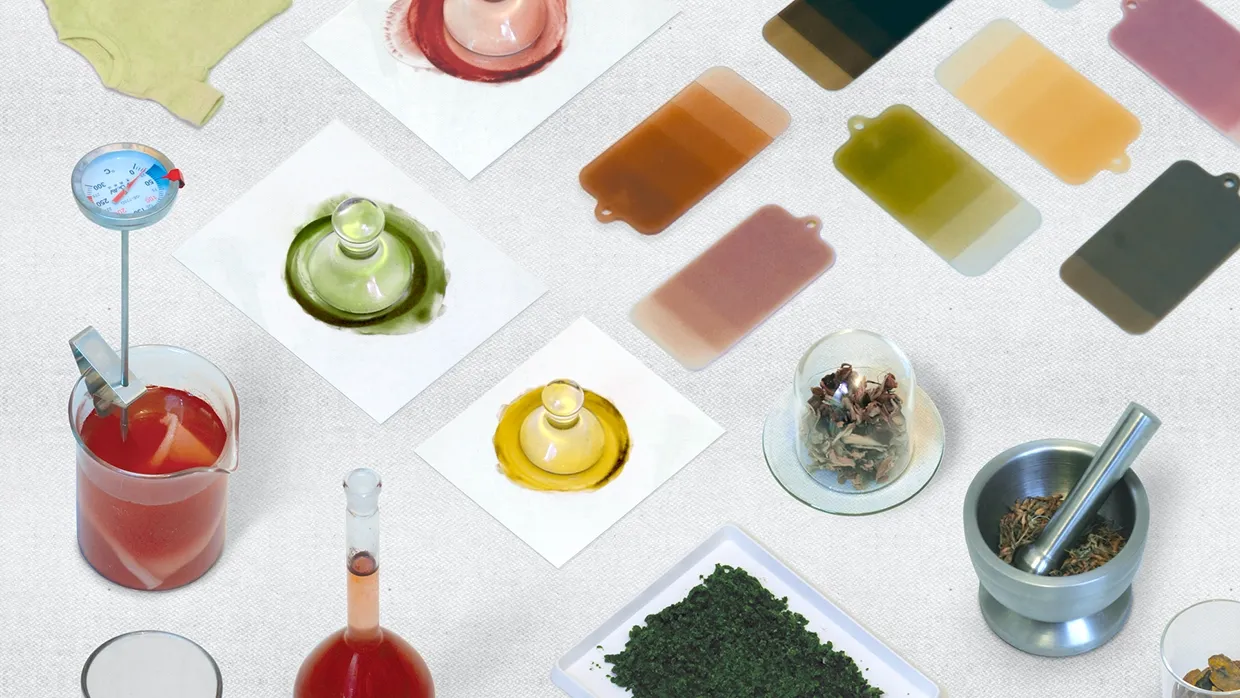Often described as one of the planet’s biggest polluters, the fashion industry accounts for roughly 10 per cent of global greenhouse-gas emissions, from fabric production and transportation to and the mountains of waste generated by fast fashion.
This autumn, a new exhibition shows that while the problem is vast, there are already solutions in motion.

New Landscapes, hosted by the British Council at its Stratford headquarters, runs until 30 January 2026.
The exhibition brings together international designers and researchers experimenting with greener approaches to garments and textile production.
From microbial dyes to seaweed-based sequins, it invites visitors to ask what the future of fashion might look like.
The exhibition demonstrates that sustainability is more than an abstract ideal: “There are opportunities for real change at all stages of the fashion, textiles, and technology value chain,” says Sally Denton, Associate Director for Academic Partnerships at UAL's Fashion, Textiles and Technology Institute (FTTI).
The projects in New Landscapes are the outcome of multi-year partnerships supported by the British Council and UAL’s FTTI.
Funding and mentorship supported innovators include Bequin, the Desi-Oon Wool Traceability Framework, and Climate Positive Microbial Colours.
Each tackles a different link of the chain, from material sourcing to eco-friendly production methods, but the goal is the same: moving ideas from research labs into everyday practice.
Drawing from the rich history of textile fabrication in India, featured projects such as Circular Handspun and Darn it! look to preserve endangered techniques for handcrafting or mending materials, demonstrating the strength of partners working together from around the globe, particularly showcasing collaborations that exist between India and the UK.

Among the standouts is Bequin, a studio developing sequins from cellulose waste in India. Conventional sequins are petroleum-based plastics and notoriously hard to recycle, but Bequin offers an alternative that has already reached the runway: Copenhagen brand Ganni featured them in its A/W25 collection.
Reimagining Desi Cotton is a project focused around regenerative design. With the aim of creating a fully biodegradable 100 per cent cotton underwear prototype, bringing to light the potential uses of the desi cotton on the Indian subcontinent.
Equally ambitious is the Desi Oon Wool Traceability Framework. Although India is home to the world’s second-largest sheep population, more than half of its indigenous wool is discarded or burnt. The project’s digital toolkit tracks fibre through the supply chain, with applications not only in fashion but potentially also in the architecture and automotive sectors.

“Scalability is always a criterion when we choose partners,” Denton explains. “The Desi Oon project has huge potential to find alternative uses for India’s indigenous wool, while Bequin’s sequins illustrate the immense potential of bio-derived materials entering the fashion system.”
For Denton, these collaborations demonstrate the power of pairing emerging innovators with household names. “It is not just about the catwalk,” she says. “There are countless innovators working on groundbreaking new products, techniques, and services. But, by gaining the attention of larger brands, there is a valid proof-of-concept. That makes them attractive to investors, the wider sector, and the general public, ensuring their early adoption.”
With regard to turning out innovators, UAL’s long history of design education underpins the initiative: “UAL has been defining creative education for over 100 years,” Denton notes. “Through FTTI, we’re leading in both research and teaching, developing the materials and methods of the future, and equipping tomorrow’s designers with the latest knowledge and expertise in sustainable design.”
“Drawing on expertise from across UAL’s six colleges and three specialist research centres, FTTI brings academic and industry experts together, internationally, to push sustainable design forward. Researchers and industry partners also have access to state-of-the-art facilities to undertake R&D — including our Design-STEM Lab — a materials testing and development lab.”
Climate Positive Microbial Colours, one of several groups presenting at the exhibition, makes striking use of the facilities — a blend of hard chemistry and passion driving the project. Offering an alternative to synthetic dyes, it transforms CO2 and microbes into colours and finishes — something that feels closer to pure magic than science.

Despite these breakthroughs, cost remains a barrier. Sustainable products often come at a higher price than fast fashion, and convincing the public to pay more isn’t straightforward.
Denton, however, is optimistic: “I think we will continue to see increased interest from consumers in sustainability,” she says. “That will drive brands to be more transparent, hopefully leading to wider adoption of sustainable textiles across all areas of fashion, apparel and wider textiles.”
She adds that this shift will not come from the consumer alone. “There is widespread legislative change at both national and multilateral levels planned in the coming years,” Denton says.

“Within the next five, we should see increased access to technologies that will support sustainability within textiles. From fibre tracing to fibre-to-fibre recycling, we should see greater investment in interdisciplinary skills to accelerate R&D.”
For East London, the exhibition feels especially resonant. The area has a history of textile manufacturing and cultural exchange, and New Landscapes taps into that legacy while looking forward.
As Denton puts it: “We hope visitors leave with a deeper understanding of the global nature of textiles and their impacts, and a renewed hope for a more sustainable future.”
New Landscapes runs at the British Council Stratford until 30 January 2026.





